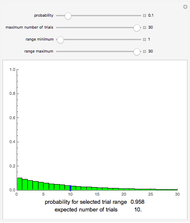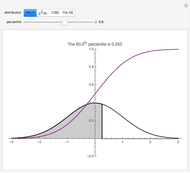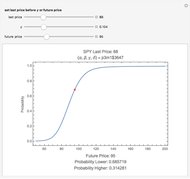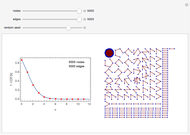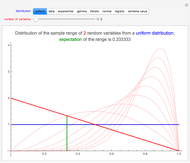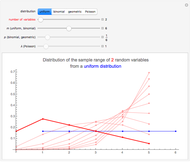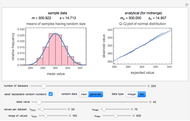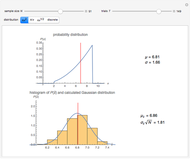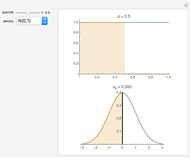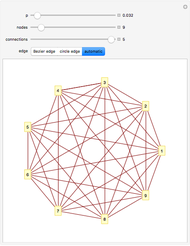Probability Distribution for the kth Greatest of a Sequence of n Random Numbers

Requires a Wolfram Notebook System
Interact on desktop, mobile and cloud with the free Wolfram Player or other Wolfram Language products.
This Demonstration shows a simple example of using extreme value theory to calculate the probability density function for the  greatest number in a series of
greatest number in a series of  random numbers drawn from three distributions of some importance in financial calculations. Many observations of the
random numbers drawn from three distributions of some importance in financial calculations. Many observations of the  greatest number in a sample of size
greatest number in a sample of size  drawn randomly from the specified distribution are taken and displayed via a histogram. The red curve is the graph of the analytical expression for the
drawn randomly from the specified distribution are taken and displayed via a histogram. The red curve is the graph of the analytical expression for the  smallest number, derived by considering the probability that, in a sequence of
smallest number, derived by considering the probability that, in a sequence of  random numbers,
random numbers,  numbers are greater than
numbers are greater than  and
and  numbers are smaller, all this weighted by the binomial distribution (see Details).
numbers are smaller, all this weighted by the binomial distribution (see Details).
Contributed by: Felipe Dimer de Oliveira (March 2011)
Open content licensed under CC BY-NC-SA
Snapshots
Details
The probability that  random numbers are smaller than
random numbers are smaller than  is given by the joint probability that each one of the random numbers is smaller than
is given by the joint probability that each one of the random numbers is smaller than  . If the observations in the sample are independent of each other we then have
. If the observations in the sample are independent of each other we then have
 ,
,
where  is the cumulative distribution function (CDF). The probability density function of the maximum of the
is the cumulative distribution function (CDF). The probability density function of the maximum of the  observations is the derivative of
observations is the derivative of  . The generalization for the
. The generalization for the  greatest number in a sequence is then given by the probability of obtaining
greatest number in a sequence is then given by the probability of obtaining  in
in  observations while obtaining
observations while obtaining  observations which are greater than
observations which are greater than  . To account for all possible permutations with which
. To account for all possible permutations with which  can be less than
can be less than  the probability must be weighted by a binomial factor,
the probability must be weighted by a binomial factor,
 .
.
Permanent Citation







